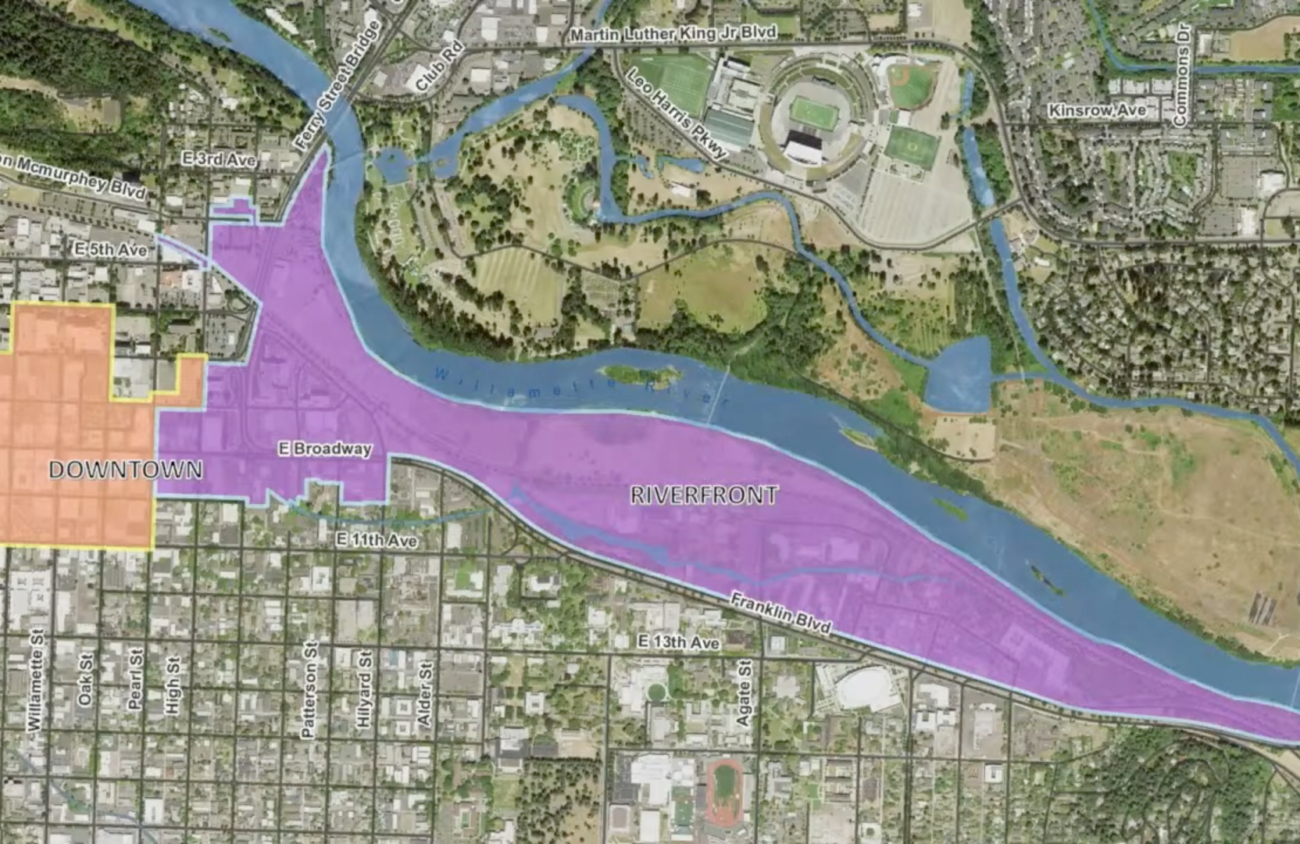Immediately after celebrating the opening of two major projects, Riverfront Park and the Farmer’s Market Pavilion, the Eugene City Council voted unanimously at a June 13 hybrid in-person and virtual work session to direct the city manager to develop a “downtown action plan,” setting an agenda of funding future projects there.
The state of Eugene’s downtown has changed over the years, city of Eugene staff said during the meeting, and it’s time to reevaluate how it’ll invest in projects that will make the city’s downtown relevant to today’s needs.
“If it’s to be an attractive center that draws people of all ages to its theaters and restaurants, we need to continually invest in its streets and sidewalks and encourage the reinvention of old buildings into new uses,” said city of Eugene Economic Strategies Manager Anne Fifield.
A downtown action plan, Fifield said, is a simpler plan rather than updating the city’s downtown plan, which is a longer process. “It’s just the individual projects that get us there that need to be updated,” she added.
Eugene has used urban renewal money to fund large downtown projects, such as implementing high speed fiber, renovating the Park Blocks and redeveloping the old Lane Community College building on 1059 Willamette into mixed-income housing. The council can use that money for the upcoming project list, but it would require a process that includes public outreach and would take about four to six months, according to meeting material documents.
Urban renewal comes from tax increment revenue, which is property value increases since the downtown district was created. But urban renewal money may need future action from the council to increase how much the city can collect downtown redevelopment because it’s about to end. According to meeting materials, the city receives about $2.6 million a year through it. If the City Council doesn’t renew the tax program, the general fund would receive $1.3 million a year in property taxes.
“2022 is an opportune time to update the project list for downtown,” Fifield said. “A lot of our sidewalks have deteriorated, there‘s buildings that could improve and be put to better use, the public spaces have aged and could see improvements.”
In addition, she said, downtown is changing, with a number of brick and mortar stores suffering from loss of revenue to online retailers and due to commercial spaces with fewer occupants as work from home is still a policy for many businesses. A list of downtown projects to prioritize should keep these changes in mind, she added, and a new plan can also identify ways to encourage more residential development.
Fifield said that one project she would like to see is redeveloping commercial buildings into housing by reducing the costs to build affordable housing.
Councilor Claire Syrett said Eugene’s downtown needs a pharmacy. “We want this neighborhood and all the people we want to live here to consider it well served,” she said. “A pharmacist from Bi-Mart could open one in Veneta, so we could open one here.” Syrett was referencing how former Bi-Mart pharmacists opened a pharmacy after the Bi-Mart pharmacy in Veneta closed when the retail chain sold its pharmacies to Walgreens.
She added that if council considered funding a multi-purpose building with urban renewal money, the city would be lobbied heavily to build a convention center downtown. Urban renewal money was once used for the Eugene Community Conference Center and Hult Center.
Councilor Emily Semple said she would like to see downtown development occur, including better sidewalks, but didn’t want to use urban renewal money. “I don’t think it’s fair,” she said. “It seems to me that we don’t have to use it. If it doesn’t go into urban renewal, it goes into the general fund. And then we can decide to spend it on a City Hall or something else. That seems so much more straightforward and honest to me.”
At the meeting, Eugene Community Development Co-director Will Dowdy said city staff would conduct outreach and research projects and provide it to council, who can then prioritize the project list and decide whether to use urban renewal money — or find funding elsewhere.
“This should look like a familiar list,” Dowdy said. “That’s something you can work with or choose to disregard or ask us for different ways to get there besides urban renewal.”
